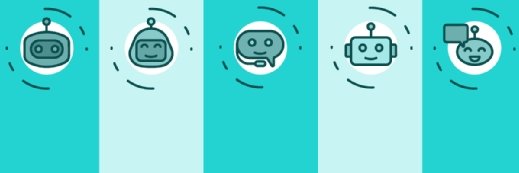
SAP pitches role-based Joule assistants as ERP work partners
New AI-driven applications for supply chain, procurement and CX also shared the spotlight as SAP strives to portray its broad portfolio as a fully integrated SaaS suite.
SAP has announced new Joule AI assistants customized for common business roles and capable of managing AI agents that carry out tasks across the applications in its cloud Business Suite.
The software vendor unveiled the Joule assistants this week at its new SAP Connect conference in Las Vegas, along with major upgrades to its procurement, supply chain and customer experience products.
AI takes over more ERP tasks
The announcements are another step toward fulfilling a vision the vendor presented last May at its Sapphire Conference in Orlando of a "flywheel" consisting of AI, applications and data that interact to build momentum. The Joule assistant sits atop the applications, monitoring conditions, sending alerts, offering recommendations and, in some cases, executing transactions on behalf of users.
"AI with the broadest context provides the deepest value," said Muhammad Alam, the SAP executive board member responsible for application product strategy and engineering, in the opening keynote. "This means access to not just data in one domain or two domains, but across all domains, while also being deeply business process and role aware."

SAP said the new role-based assistants are designed to partner with people who work in those roles. Joule then chooses and manages the AI agents needed to execute the appropriate workflows across the application suite.
The agents were themselves the subject of numerous product announcements for key business functions including finance, HR, supply chain management, CRM and procurement. For example, a new cash management agent analyzes bank statements to assist with general ledger reconciliation and identify potential cash shortages. A career and talent development agent "reasons" over succession plans to identify prospective leaders and generate professional development plans for them.
Since the public release of generative AI (GenAI) in 2022, SAP has said AI chatbots will evolve to become the new UI of its ERP products. The role-based Joule assistants shown this week take that approach a big step further by insulating users even more from the ERP system's menus and commands.
Jon Reed, co-founder of Diginomica, an analyst firm, expressed skepticism about pushing ERP further into the background but said he understands why SAP is taking the approach.
"Whoever owns that interface has a good chance of owning an important part -- the strategic part -- of the customer relationship," Reed said. With competitors like ServiceNow offering user-friendly front ends to back-end enterprise systems, SAP needs to stay competitive. "SAP wants to be that vendor that you interact with in order to do things," he said.
But SAP must strike a balance between the large language models (LLMs) of GenAI, which are based on probabilities and better suited for searching data, and the deterministic workflows of ERP, which is fundamentally still a system for executing and recording transactions. "It's not just about accessing data. It's about completing transactions that are compliant and 99.9% reliable. Those aren't strengths of current AI," Reed said.
SAP's role-specific Joule assistants are part of the solution. "The reason they're specialized is they're focused on roles where they won't get into as much trouble, and they're being fed very, very specific data into their context to try to help the LLM make better decisions," he said.
New data connector extends BDC's reach
SAP addressed the data component of the flywheel by announcing a new version of its Business Data Cloud (BDC), a SaaS platform for unifying and managing SAP and non-SAP data that debuted in February. The new product, BDC Connect, provides a secure, bidirectional link between BDC and partner platforms. Zero-copy sharing keeps the data in SAP systems, but customers can access it from their existing data platforms without having to make copies, according to SAP.
The first partners to use BDC Connect are Google Cloud and the Databricks data-management platform, with SAP promising more partners to follow. Databricks was already part of BDC and a key element of the February announcement. BDC Connect was described as extending it across an "open data ecosystem."
AI upgrades for applications
Two new applications built primarily from AI, plus a major "AI-native" upgrade of a long-in-the-tooth SAP acquisition, garnered almost as much attention as the Joule assistants.
The most significant offering is an AI-native version of the SAP Ariba procurement platform built on Business Technology Platform (BTP), SAP's package for developing and integrating cloud applications. SAP bought Ariba in 2012 but has faced criticism for being slow to modernize its UI or fully integrate it with the newer cloud applications.
"That's a big deal," said Joshua Greenbaum, principal at Enterprise Applications Consulting, adding that Ariba has desperately needed a new user experience, which he called "very clunky."
But Greenbaum considered the BTP rewrite more important because it enables Ariba to run in a wide variety of landscapes, including hybrid on-premises and cloud deployments as well as those that combine public and private clouds. "That allows it to be deployable in almost any imaginable scenario," he said.
Another new AI-native application, SAP Supply Chain Orchestration, combines Joule with a live knowledge graph to detect risks in the supply chain and orchestrate a response.
SAP Engagement Cloud is designed to be a unified system for engaging customers and relies on BDC to integrate the myriad sources of customer and operational data. A Joule assistant and embedded AI automate decisions and help users execute campaigns faster while scaling up personalization to large customer bases, according to SAP.
The new applications are slated for general availability in 2026.
Integration: All for one and one for all?
For much of 2025, SAP has run a messaging campaign meant to position acquired platforms like Ariba and the Concur expense management system as tightly linked members of what it now calls Business Suite, with S/4HANA Cloud, the latest generation of SAP ERP, at the center. Integrating cloud applications for every major business function is viewed in the ERP industry as essential to AI's usefulness because AI agents, which almost always run in the cloud, must be able to traverse applications to carry out business processes like humans do.
Manoj Swaminathan, general manager and chief product officer of the Business Suite, said in an interview that SAP has achieved that level of integration. "All of our applications are integrated right out of the box," he said. "Customers don't have to deal with configuring or integrating all of these applications as part of their last-mile implementation."
Swaminathan acknowledged, however, that SAP long had a philosophy of allowing its acquired properties, including Ariba, Concur, and the Fieldglass vendor management system, to run as separate business units. But that has all changed with the new Business Suite and the vision of a seamless application ecosystem and data that humans, as well as AI, can move around with ease.
"You will have one consistent experience across these applications without you realizing the seams of these products, which was very evident in the past, and you will not see that going forward."
Holger Mueller, vice president and principal analyst at Constellation Research, said letting the acquired properties run separately initially made sense and was aligned with SAP management's "don't break it" policy. But then the integration was neglected.
"Now SAP has to pay the piper," Mueller said. "Six years ago, when [CEO] Christian Klein came on board, the No. 1 complaint was integration." Progress should accelerate now that one person (Alam), who comes from the "spend side" of SAP -- Ariba, Concur and Fieldglass -- is in charge of all the applications, he said.
"He has to fix the spend side, but he has to bring all of that together." Bringing the separate properties' Connect events together in one conference is a way to demonstrate the synergies, Mueller said.
David Essex is an industry editor who covers enterprise applications, emerging technology and market trends, and creates in-depth content for several TechTarget websites.








